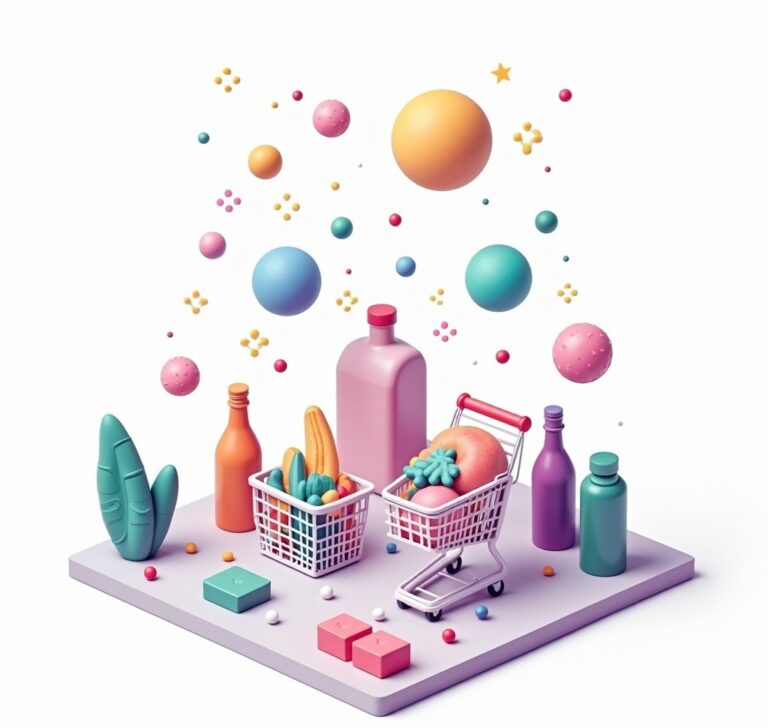Ever wondered what those mysterious E-numbers on your food labels actually mean? You’re not alone! As someone who’s spent countless hours in grocery store aisles squinting at ingredients lists, I decided to dive deep into the world of food additives. What I discovered might surprise you – while many E-numbers are perfectly safe and serve important functions in our food, some deserve a closer look, especially given recent research.
In 2023, the European Food Safety Authority (EFSA) reviewed several common food additives, bringing new insights into what we’re actually eating. Don’t worry – this isn’t about going full panic mode over processed foods! Instead, think of this as your friendly guide to making more informed choices about what goes into your shopping cart.
Let’s break down these ingredients in plain English – no chemistry degree required! Whether you’re a parent concerned about artificial colors, someone with sensitivities, or just curious about what’s in your food, this guide is for you.
The Colors That Raise Red Flags
Remember when you were a kid, and certain candies would turn your tongue blue? Those artificial colors are among the most controversial additives. Research, particularly the famous Southampton study, has shown that some artificial colors might affect children’s behavior. The big ones to watch for are E102 (Tartrazine) and E124 (Ponceau 4R). They’re so controversial that in Europe, products containing them must carry a warning label about effects on children’s attention.
The Preservation Game
We all want our food to last longer (nobody likes throwing away spoiled groceries!), but some preservatives are more controversial than others. The spotlight is particularly on nitrates and nitrites (E250-E251) in processed meats. These are the ones you’ll find in bacon, hot dogs, and deli meats. While they keep our food safe from harmful bacteria, high consumption has been linked to some health concerns.
The Flavor Enhancer Everyone Talks About
You’ve probably heard of MSG (E621). It’s the flavor enhancer that’s gotten quite a reputation over the years. While many people claim sensitivity to it, the science is mixed. The key here isn’t necessarily to avoid it completely but to be aware of how much you’re consuming – it often hides under different names like “yeast extract” or “hydrolyzed protein.”
Sweet Talk: Artificial Sweeteners
In our quest to reduce sugar, artificial sweeteners have become increasingly common. But popular ones like aspartame (E951) continue to spark debate. Recent research suggests they might affect our gut microbiome and metabolism in unexpected ways. This doesn’t mean you need to avoid them entirely, but moderation is key.
Making It Practical: Your Shopping Strategy
Here’s the thing – you don’t need to memorize hundreds of E-numbers or completely overhaul your shopping cart overnight. Instead, start with these simple steps:
1. Focus on the regulars: What are your family’s daily staples? Start by checking those labels first.
2. Make gradual swaps: Found something concerning in your regular purchases? Look for alternatives next time you shop.
3. Think frequency: Occasional exposure to most additives isn’t a big deal. It’s the everyday stuff that matters most.
The Real-World Approach
Let’s be realistic – unless you’re growing all your own food, you’ll encounter some food additives. The goal isn’t to eliminate them completely but to make informed choices about the ones you consume regularly. Some practical tips:
• Choose fresh over processed when possible
• Read labels on your regular purchases
• Pay special attention to children’s foods
• Watch out for “stacking” – multiple sources of the same additives
Looking Ahead
Here’s the takeaway: while many food additives are safe and serve important purposes (like keeping our food fresh and safe to eat), being aware of certain ingredients can help us make better choices for ourselves and our families. Start small – maybe by checking for artificial colors if you have active kids, or watching out for sulfites if you’re sensitive to them.
The food industry is constantly evolving, with many companies now responding to consumer demand for cleaner labels and natural alternatives. Your choices matter! Every time you pick up a product and read its label, you’re voting with your wallet for the kind of food system you want to see.
Stay curious, keep reading those labels, and remember – small changes in your food choices can make a big difference in the long run. Have questions about specific additives or want to share your own experience with food ingredients? Join our Facebook group – I’d love to hear your thoughts and continue this conversation!
P.S. Remember that new research emerges all the time. While this guide is current for 2024, it’s always good to stay informed about the latest findings in food safety and nutrition.
High-Risk Product Categories:
| Product Type | Watch For | Risk Level | Better Choices |
|---|---|---|---|
| Processed Meats | E250, E251, E621 | HIGH | Fresh meats, natural curing |
| Soft Drinks | E211, E950-955 | HIGH | Water, natural juices |
| Candies/Sweets | E102-133 | HIGH | Natural sweets, dried fruit |
| Ready Meals | E621, E627, E631 | HIGH | Home-cooked meals |
| Children’s Foods | E102-133, E211 | HIGH | Natural foods |
| Baked Goods | E280-282, E471 | MEDIUM | Fresh-baked, sourdough |
| Diet Products | E950-955 | MEDIUM | Naturally low-cal foods |
| Canned Foods | E385, phosphates | MEDIUM | Fresh/frozen alternatives |
P.P.S. Don’t forget to download the guide for your next grocery shopping trip. Your future self will thank you! 😊
